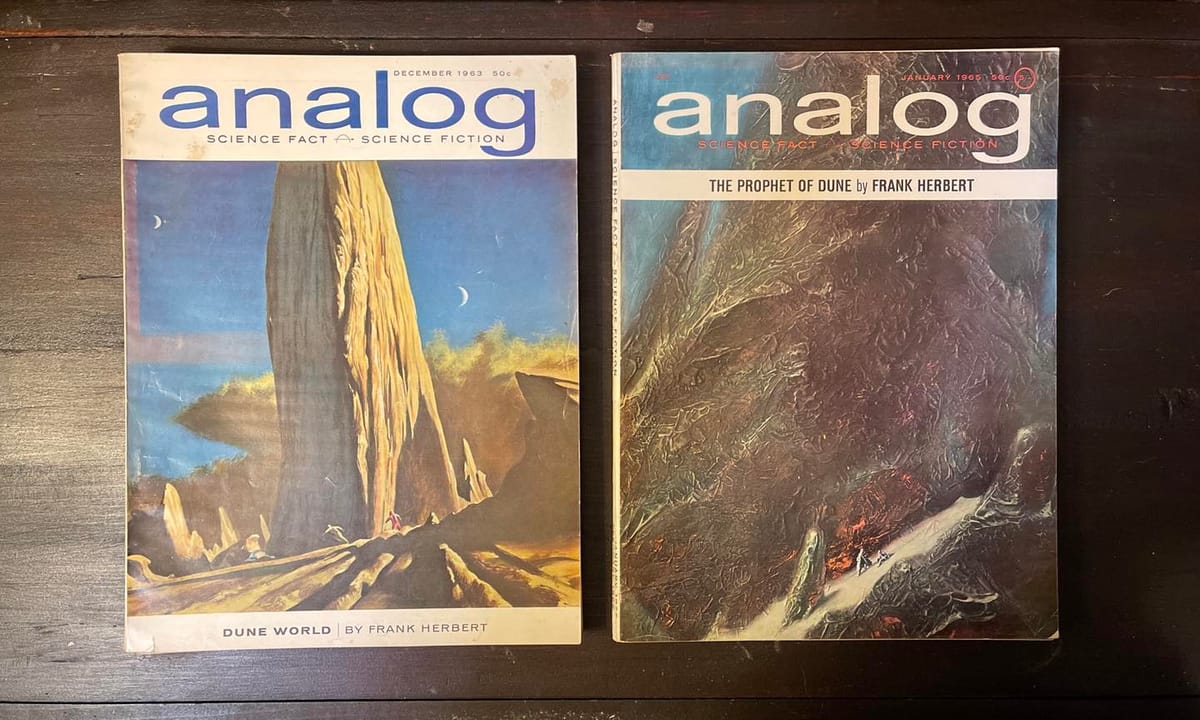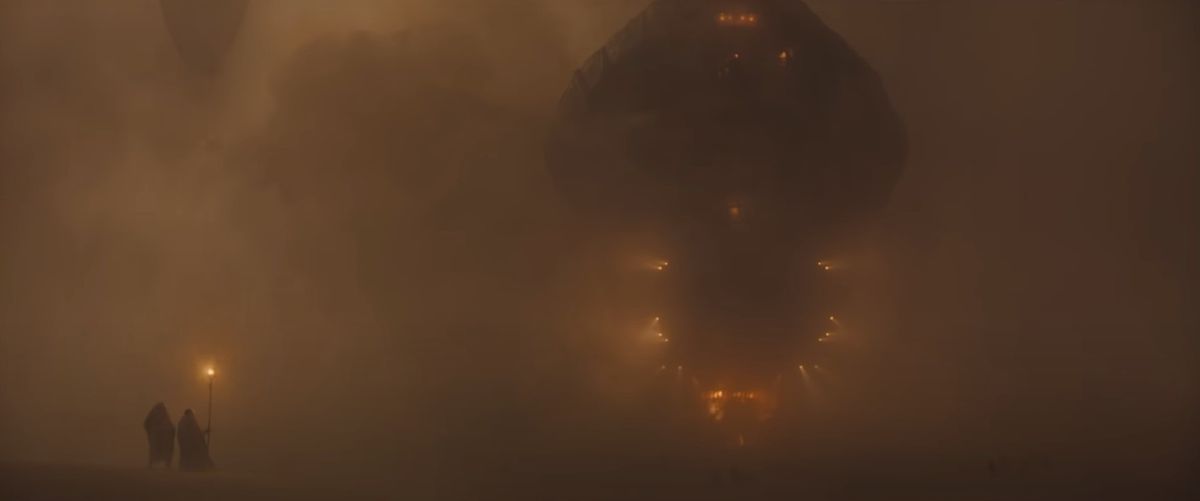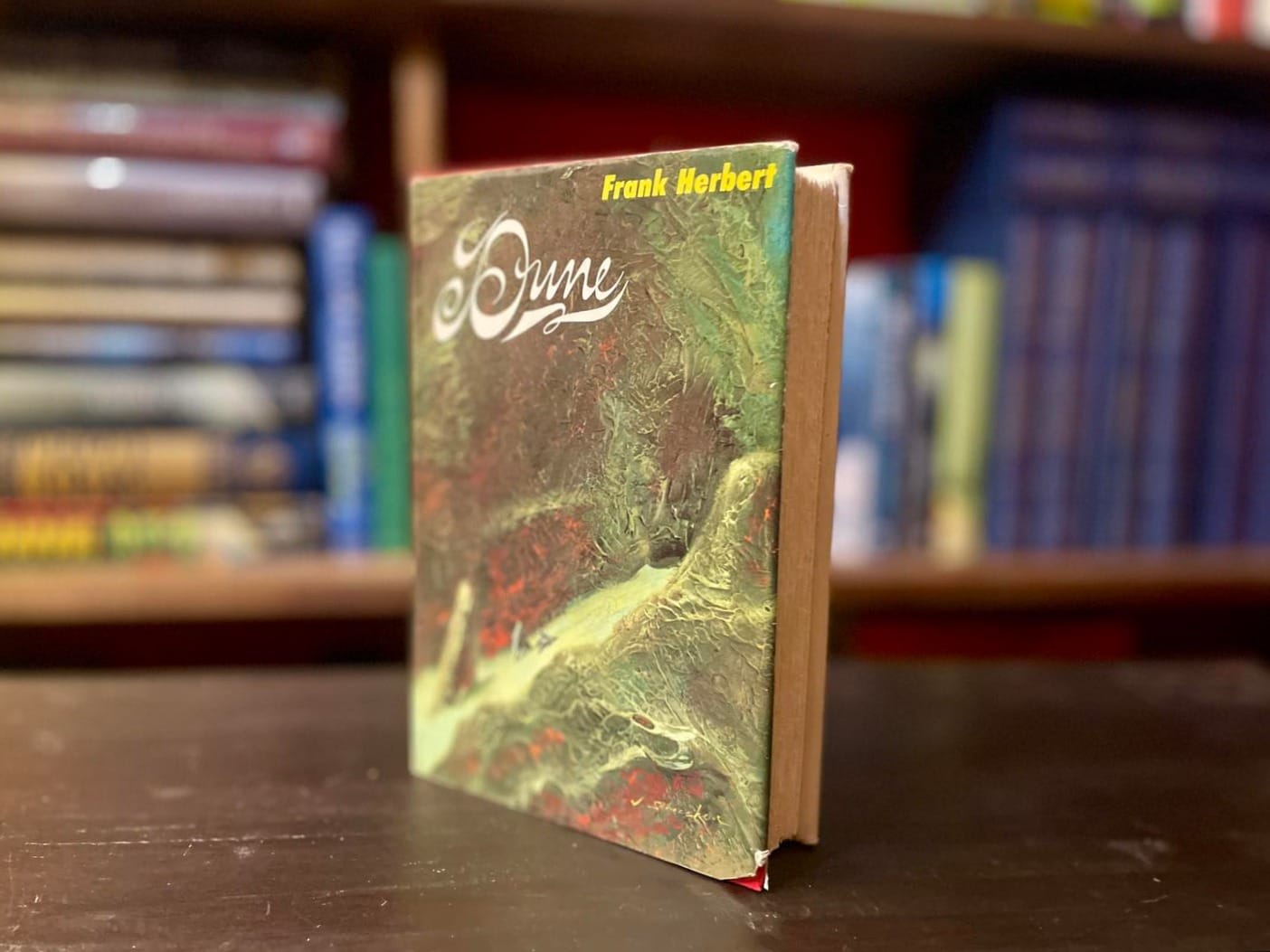The original Dunes Part 1 and 2
Denis Villeneuve's Dune is now out in theaters, and it's a good opportunity to look back on how it was originally published

Dune: Part 2 hits theaters this weekend. It's the culmination of the adaptation of Frank Herbert's epic science fiction novel Dune, directed by Canadian filmmaker Denis Villeneuve.
Dune is famously a big book that's stymied filmmakers who've tried to adapt it in the past: Planet of the Apes producer Arthur P. Jacobs attempted an adaptation in the 1970s, while Alejandro Jodorowsky famously worked on his own take shortly thereafter, which is recounted in the excellent documentary Jodorowsky's Dune. The first adaptation that did make it into theaters was from David Lynch, and the SCI FI channel also produced its own miniseries adaptation in 2000, directed by John Harrison. That was followed up by a second miniseries, Children of Dune, which mashed up the second and third books in the series, Dune Messiah and Children of Dune.
Those adaptations have been polarizing: Lynch's film gets many of the story's big beats into a two hour runtime, while Harrison's adaptation was done on a large TV budget. It wasn't until Villeneuve's adaptation came along that it felt like a director had the resources and vision to really capture the essence of Herbert's novel: an epic story of a power struggle in the desert, one that touches on environmental concerns, religious fundamentalism, and the impact of colonialism, all with a big special effects budget that brought the world to life.

A big part of that success, I think, is the fact that Villeneuve split the film into two parts, not only giving him a couple of additional hours to contain more of the book's plot, but also to narrow in on some of those complicated elements of the story that really makes Dune stand the test of time.
It's also a neat, (probably) unintentional nod to the route that Herbert took when publishing the novel in the first place. Starting in December 1963, Herbert serialized Dune in the science fiction magazine Analog Science Fiction & Fact.
Years before, he had been inspired to write an article about some efforts from the USDA to use European Beach Grass to stabilize some sand dunes near Florence, Oregon. Herbert began work on the project, and it sort of grew from there: he imagined a world that was entirely sand dunes, and began working on what became this sprawling epic.
He submitted the story to editor John W. Campbell Jr. at Analog, who acquired it. Magazines such as Analog would often publish a novel – any work of fiction 50,000 words or over – sometimes in a single issue, and sometimes broken up into installments. Herbert's novel was big, so he and Campbell opted to split the novel into two parts, each of which would be serialized. The first part, titled Dune World hit stands in December 1963, accompanied by art from John Schoenherr, and continued in the January and February 1964 issues. The next serialization, titled The Prophet of Dune, was published over five installments in the magazine between January and May 1965.

The book industry had been undergoing some major changes in the 1950s and 1960s. From the 1920s and into the 30s and 40s, the main outlet that science fiction writers had were magazines such as Amazing Stories or Astounding (which became Analog): it wasn't until a bit later that authors would begin to compile some of these stories into books – often called fixups – or publish their novels as standalone volumes. But as the publishing industry grew, authors would often take those serialized stories and resell them to a genre publisher.
Herbert tried to find a publisher to publish the novel in book form, no publishers would take it: it was too large and complicated. It wasn't until an editor working for Chilton Books (known for making automotive manuals) convinced his employer to take the gamble and publish the book. It came out in August 1965, while Ace Books published a paperback in 1967.

Prior to publishing Dune in Analog, Herbert had already begun working on a sequel, Dune Messiah. He wanted to explore and continue some of the ideas that he'd put into that first novel: the dangers of power in a person's hands, and ended up inverting some of the lessons that he left off with. Campbell wasn't pleased: he clashed with Herbert about the trajectory of the character's journeys, and ended up not acquiring the for the magazine. Herbert took it instead to another science fiction publication, Galaxy Science Fiction, which published it between July and November 1969.
By the time he had written a third installment, Children of Dune, Campbell had passed away, and it ran as a serial between January and April 1976 in Analog. When Herbert republished it as a hardcover at Berkley/Putnam, it was a massive hit: it's often cited as the first-ever science fiction novel to hit a bestseller list.
Dune's publication history is a fascinating story, and with the new film hitting theaters (and a third installment already in the works), the novel and Herbert's world has never been more popular. It's heartening to see that there's an appetite amongst film audiences (and the people who make them) for stories that aren't just light, popcorn fare, something that Herbert's readers have known for decades.
Here's some additional pieces that I've written about Dune for this newsletter over the years: